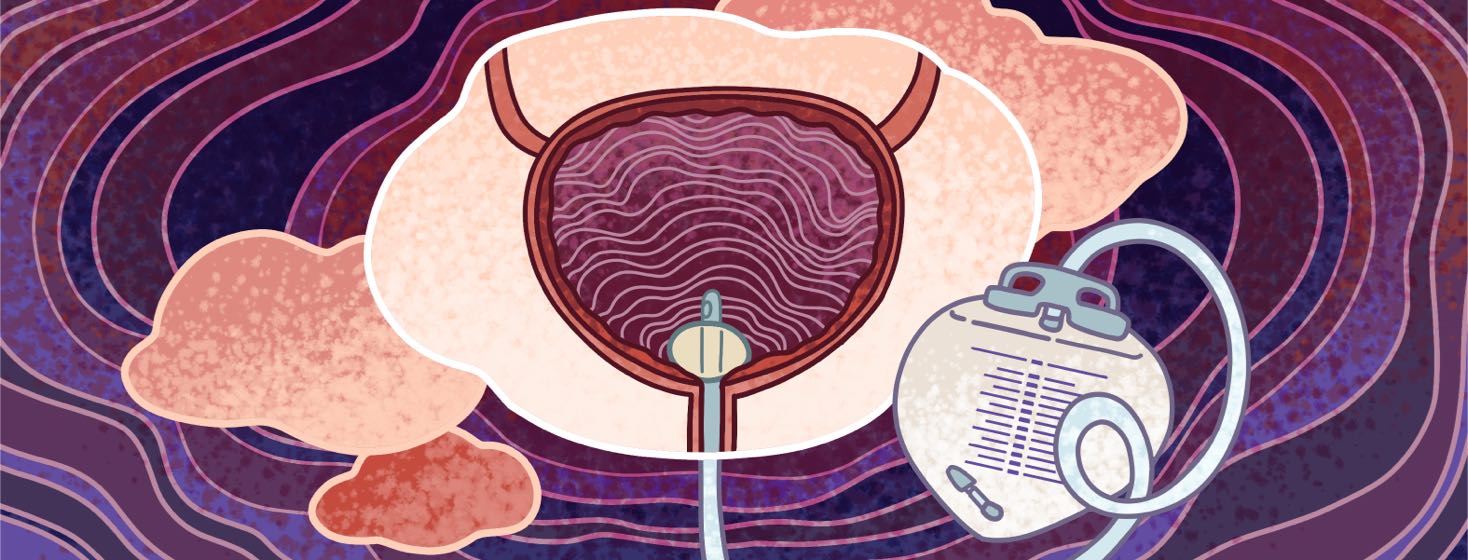Back From a TURBT: Caregivers and Catheters
Mom's second attempt and first successful transurethral resection of a bladder tumor occurred about 10 days after the first unsuccessful attempt. I was so unbelievably nervous on the way to and during surgery, yet I wasn't even the one in danger. One thing I didn't fully anticipate was the healing involved in a TURBT.
Mom handled it so well despite so much pain and discomfort. The heart-wrenching realities of navigating cancer treatment during the first pandemic in our lifetimes were difficult for us to endure.
Only the Foley
After both attempts at TURBT, Mom went home with a Foley catheter inflated in her bladder. Each time, a nurse or attendant wheeled Mom in a chair to the car with a long clear tube hanging out from her bed dress, into a white plastic bag.
She was concealing her urostomy bag, ever the proud and proper lady.
The catheter situation
I wish I had realized then that this catheter situation soured my Mom's outlook on urostomy diversion. She deplored the experience and inconvenience of the long tube and big bag.
The post-surgery "handoff" had to be done at the curb of the sidewalk and driveway, near our car. This was the setting I received my sedated Mother. I had to quickly glean whatever caregiving instructions I could from a nurse who had other patients that shift. I understood there was a balloon in her bladder, filled with 10 cc's of saline, that I would have to deflate using the included tools.
From a caregiver's point of view, these Foley catheters are pretty easy to empty and keep clean. At least when they are only used a few days at a time, as is the case after TURBT. After 3 days, Mom would be able to take the Foley catheter out.
Sounded simple enough.
Discomfort and pain
The drives home were sensitive, to say the least. Especially after the successful removal of the tumor, Mom was extremely sensitive and sore.
I remember one speed bump in particular that I miscalculated and we dropped harder than I wanted. Mom's painful gasp broke my heart. I tried hard to drive as smoothly and earnestly as I could ever after, to pretty good result.
After getting her home, the anesthesia started to wear off. Mom struggled with feeling urgency and accepting that she could just relax for the first time in over a year. We didn't need to rush to a restroom! I don't think the tension ever truly left her pelvic floor.
Once home and in bed, Mom struggled to find a comfortable position. "It feels like something is stabbing me inside! I can't sit or lay down at all because it gets worse! It's like something is poking me." She tried to reposition a few times, yet the bodily wince and furrow of her brow said it all.
Was this normal?
Then the spasms started. I called her surgery team to get advice.
Was this normal? Should we be worried about perforating her bladder, given its newly-discovered delicate state? They said spasms were normal, which should reside within days. Given there is a bit of a nub at the end of the Foley bubble, even when inflated, it could cause that poking sensation.
I remembered a little blood in the bag was normal, but hemorrhage meant a trip to ER.
"I wish they would have told me what to expect!" exclaimed Mom with tears in her eyes.
Removal
The morning of the third day after each TURBT, Mom was beyond ready to remove the catheter.
For the first few surgeries, I emptied the Foley balloon of its saline solution and Mom sat in the restroom to remove it. The first time, it felt stuck. Mom began crying again, although I could tell she didn't want to. It was just all too overwhelming for her. I'm so glad I was there.
I called the surgery team again. The nurse said it was not abnormal for it to feel difficult to remove. After a stronger pull, Mom got it out and threw it directly into the trash.
Walking through this battle together
Throughout Mom's battle, doctors and nurses were constantly shocked that her son would be helping her do all of this.
While I can understand that a bit, there was no way I was going to allow gender roles to keep me from helping my Mom. I knew my educational background, communication skills, and research methodology would be an asset to Mom's care.
I simply had to be there.

Join the conversation